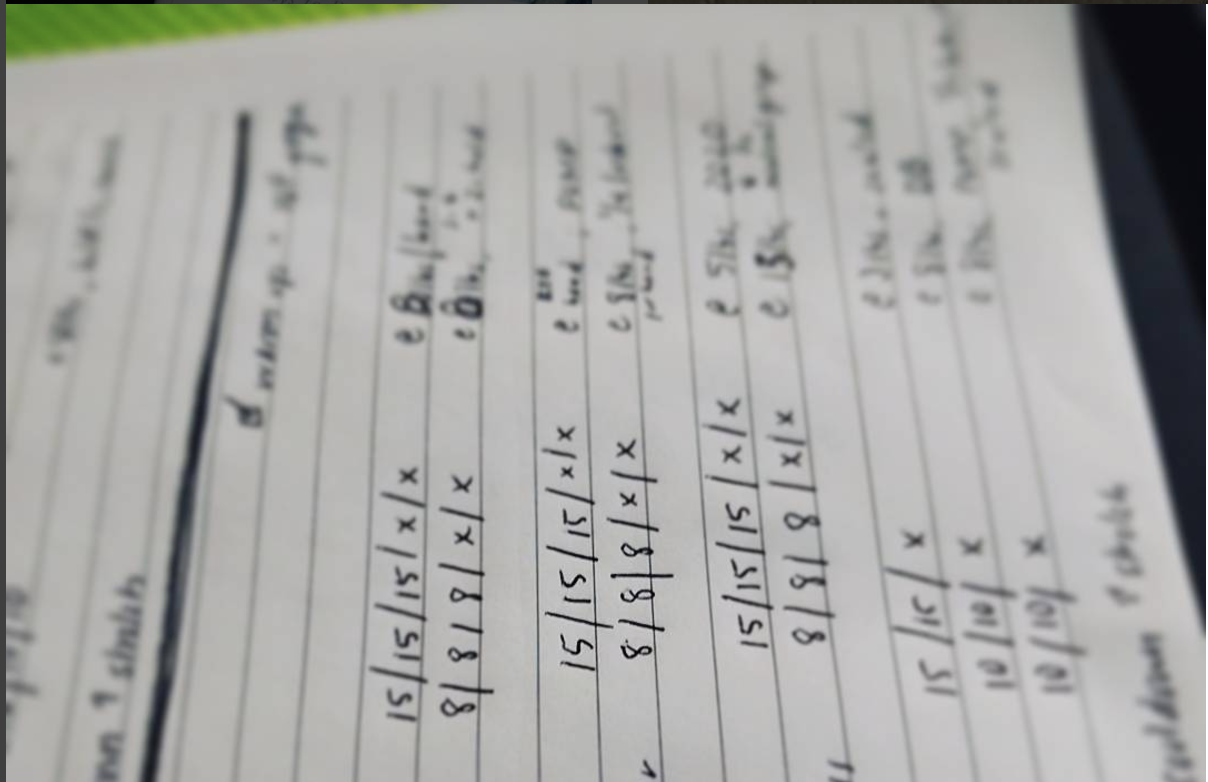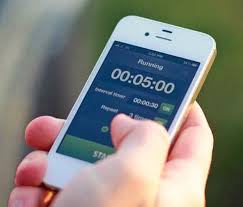
There’s an app for that.
A HORRIFICALLY EFFECTIVE MARKETING CAMPAIGN
This article is going to make me come across like an old curmudgeon that is skeptical of all things technological. I get that. I’m not a Luddite, despite how this might sound. But I’m firmly in the camp that believes that our technology — our phones specifically — bring us closer together while bringing us further apart.
And while I’d love to wax philosophical about the problem with staring at your iPhone while sitting across from your bae in a booth at a restaurant, this isn’t that article. (Also, now that I have a kid, that phone at the restaurant has the functionality of a literal lifesaver.)
I have my nose glued to my phone just as much as the next person. More, probably. But there’s one place that I never take it: THE GYM.
A lot of times those headphones are plugged into nothing.
Or an iPod. Remember, those?
This is why I don’t fuck with my phone — and the many potential training apps available therein — at the gym:
 1) That 60-second rest turns into a 6-minute rest.
1) That 60-second rest turns into a 6-minute rest.
It happens to the best of us. We head to Facebook specifically to look at that cute picture of our doggo the dog walker tagged us in and suddenly we’ve disappeared down a rabbit hole of political posts, questionably funny memes, and click-bait articles. (Hi to everyone that’s reading this as click-bait at the gym!)
While most rest periods don’t have to be SUPER specific, sitting long enough to scroll through your entire feed — and then hop over to Instagram for a quick second — is too long to be sitting.
THE EXCEPTION: You’re using your phone’s stopwatch to measure your rest exactly. You never leave the stopwatch app. Do not pass go. Do not collect $200.
2) So it is written, so shall it be done.
Everything on the internet is true, right?
To some degree, we’re all conditioned to think this which can dampen our critical thinking muscles when it comes to evaluating our training program.
“It says 6 sets of 10 at 150 pounds? I shall do that exactly. Even if it kills me.”
Your training program handed to you on your phone may seem like an awesome idea, but it’s probably causing you to follow it blindly. If you know anything about me and Iron Octopus Fitness, you know that focus and intensity are key to making big strides in your training. It’s hard to be focused and intense while blindly doing what your Droid tells you to do.
EXCEPTION: You stare at yourself in the mirror and remind yourself to “focus”.
3) A [BIG] gap in the data.
Most apps for tracking training data collect the basics: reps, sets, weight, tempo, rest. Those things are all important, but there’s a lot of data about your training, your strength, your recovery, and your athletic performance that aren’t contained in those numbers.
There’s a lot more to evaluating HOW your training is working for you than just knowing what you can bench or if your squat PR went up this week.
EXCEPTION: Your personal assistant enters that data into your phone AND collects all of the other data for you, too.
4) Thine ego is fragile…
…and so is thine phone.
The last time I brought my phone to the gym I dropped it no fewer than 6 times and a bro nearly crushed it when he threw his dumbbells on the ground with a grunt post shoulder press.
I don’t know about you, but any device I own that runs apps doesn’t come cheap. It shouldn’t be rubbing shoulders with spilled pre-workout, piles of chalk dust, or the well-preserved gym sneakers of some meathead.
EXCEPTION: none
SO WHAT SHOULD YOU DO?
Since consistent data collection and review is one of the biggest needle movers improving your game and becoming more confident with your training, GET YOURSELF A NOTEBOOK.
It’s time to put pen to paper and collect the data that will really tell you something about your training program, your athletic performance, and the normal fluctuations of both that coming with being 100% human.
Collect workout data (of course).
This is exactly what it sounds like. You want to collect as much data as you can about your workouts. This form of data collection works as both baseline and assessment. Every workout gives you a new baseline to build from and you can also use your information to see how much you’ve improved from your previous baseline. Or from your pre-assessments.
The workout data I recommend collecting is:
- Exercises! This includes indicating any modifications or adjustments you made (like using an incline bench or holding a movement for a specific amount of time) and whether the exercises are part of a circuit, straight set, superset, etc.
- Sets & Reps! There are various ways to do this. You can check out this video for an example of how I do to help yourself get started. This is a biggie, so don’t skip it!
- Resistance! This can be the amount of weight you’re using, the height of a step you’re on, or what color resistance band you chose. You want to challenge your resistance each time, so it’s important that you know what resistance you used in the past.
Workout data doesn’t typically take up a ton of room in your training notebook. (My training notebook is about a third full and I’ve been using it since this same time last year.) And that means you have room for all the other important stuff.
Collect notes.
Notes are a bit subjective, but where the majority of your information will come from. The notes I’m referring to here are specific to your workout and help you make determinations about how you’ll adjust the workout for the next time.
THIS IS WHY YOU STAY FOCUSED!
Your notes can indicate whether you think you should go up in weight next time or if you want to try a variation or even the fact that you’re on your period that day. Making notes along with your workout is an important part of getting clued into HOW your training feels each day and also how it’s working for you.
It’s as much about the act of checking in with yourself as it is about the data that you collect.
The goal with notes is brevity and clarity. They exist in the margins of your notebook, so they’re necessarily short-winded. My favorite version of short note-taking is to use up/down arrows and an equal sign to indicate whether I should increase, decrease, or keep my resistance the same the next time that I do that exercise.
Collect ATWs.
ATW stands for “also this week”.
Keeping track of ALL of your other physical commitments in the week ultimately helps your data collection game. Especially if you’re prone to burnout and exhaustion.
Knowing what you’ve done physically across the course of a week (or several) can give you information about how to better arrange your schedule to meet your needs while avoiding feeling overwhelmed or missing important things — like practice or yoga.
Once you have a few weeks under your belt, you can use it to determine if your overall training schedule is working for you. Especially if you pair it with the last form of data collection:
Collect Weekly Reflections.
Ah, subjective data at it’s finest.
At the end of each week, in your training notebook or elsewhere, you’re going to commit to writing for 5-10 minutes about how your training felt this week. (Sometimes you’ll get off topic. That’s fine.)
The purpose of this is for you to think about whether you’re feeling burnt out, overwhelmed, frustrated, or totally awesome.
We often discount our feelings — or ignore them completely — but spending time on a weekly reflection is the best way to uncover some of the hidden parts of our training and our crazy schedules that we miss.
Keeping up with my weekly reflections was how I learned that I needed to take it easier on game weeks and that I needed to spend more time on mobility on the days after tournaments. Those things SEEM like common sense, but it’s easy to ignore them. Which is why the weekly reflection is so important.
These are some questions to ask yourself during weekly reflection:
- Did I enjoy my workouts this week? Why or why not?
- How do I feel? In terms of energy level, sleep, hydration, etc.?
- Am I seeing improvement towards my goals? How do I know?
- Anything else that’s going on this week that might impact my training.
Over time, this type of data reveals patterns about your training that can help you create a training plan that works for you and feels more automated.
THE BEST PART.
I’ve spilled hot pink workout drink on my paper notebook more times than I care to admit and it still works.
Want more?
If you’re interested in more exclusive content, access to my FREE resource library, and the slightly weird workings of my inner mind, you can sign up for the Iron Octopus Fitness email list HERE. Wherein I harass you weekly with all things intelligent cross training, mindset, and…other.

